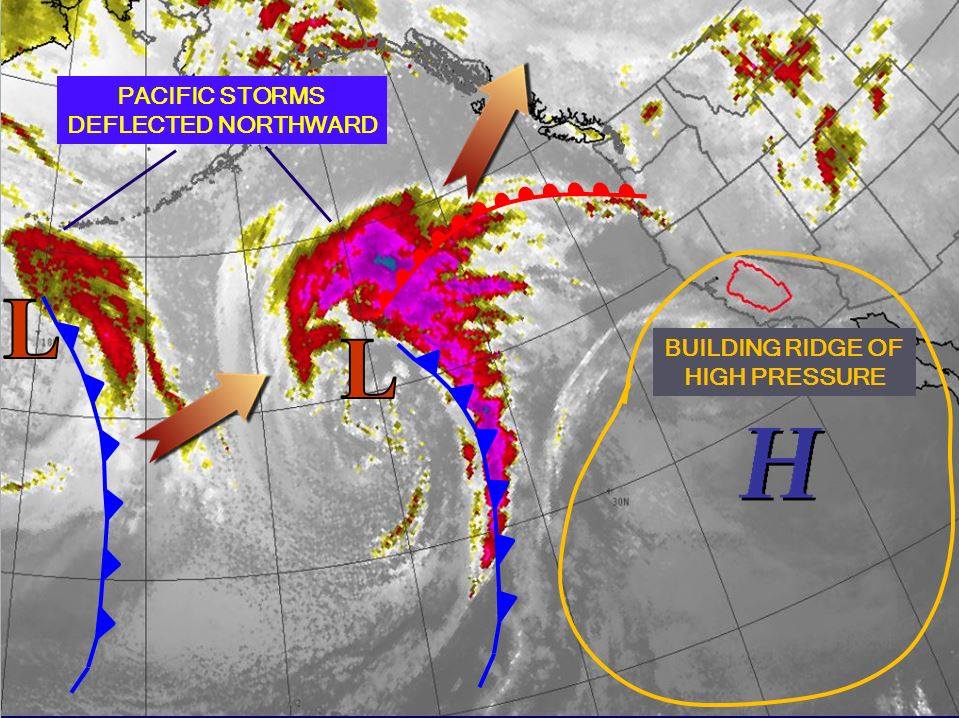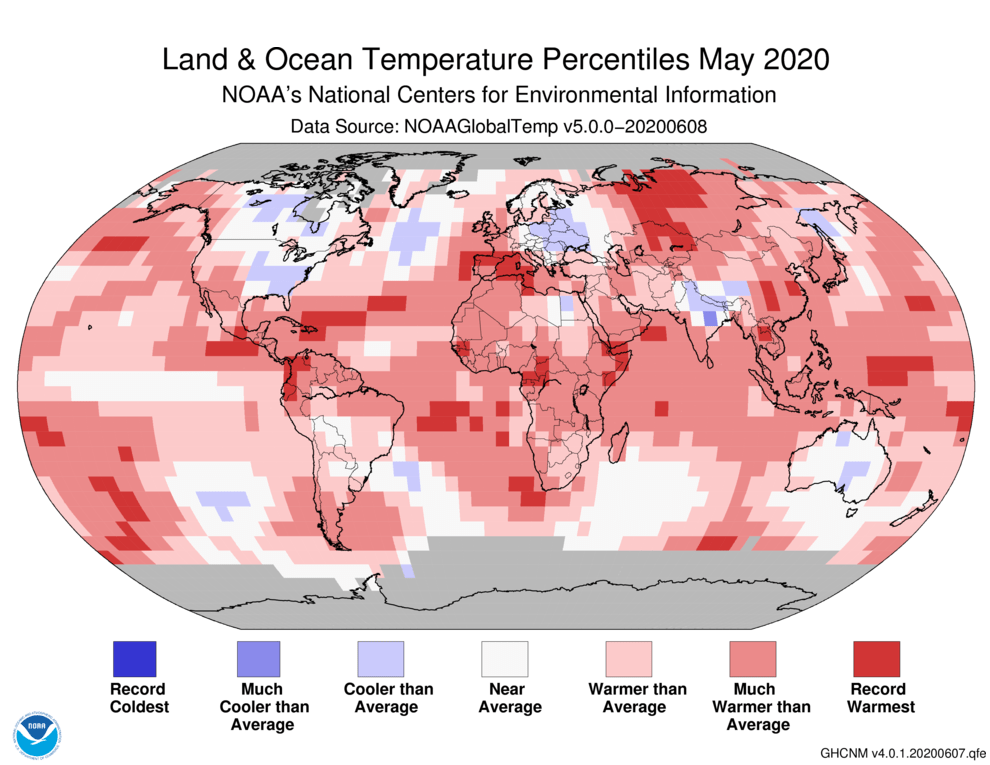
The globally averaged temperature departure from average for May 2020 tied with 2016 as the highest for the month of May in the 141-year NOAA global temperature dataset record, which dates back to 1880.
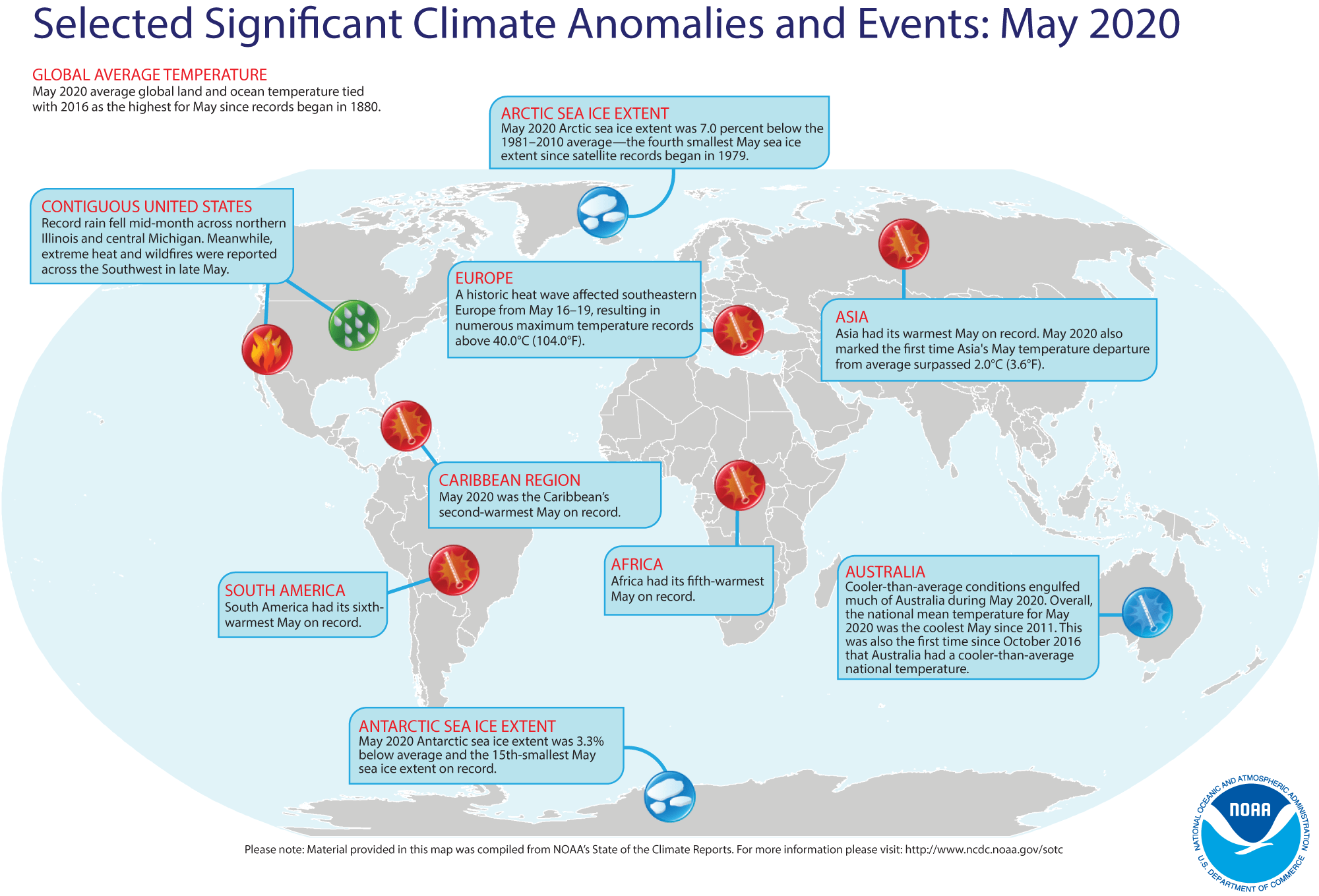
This monthly summary, developed by scientists at NOAA National Centers for Environmental Information, is part of the suite of climate services NOAA provides to government, business, academia, and the public to support informed decision-making.
May 2020 Temperature
The May 2020 global surface temperature was 1.71°F (0.95°C) above the 20th-century average of 58.6°F (14.8°C), tying with 2016 as the highest for May in the 141-year record.
- May 2020 marked the 44th consecutive May and the 425th consecutive month with temperatures, at least nominally, above the 20th-century average.
- The 10 warmest Mays have all occurred since 1998. However, the 2014-2020 Mays are the seven warmest in the 141-year record.
- The Northern Hemisphere also had its warmest May on record, with a departure from average of +2.14°F (+1.19°C), surpassing the previous record set in 2015 and matched in 2016 by 0.18°F (0.10°C). The Southern Hemisphere’s departure from average was 1.30°F (0.72°C) above average and tied with 1998 as the fifth-highest May temperature on record.
- May 2020 was characterized by warmer-than-average temperatures across much of the globe. Much of northern and southeastern Asia, northern Africa, Alaska, the southwest contiguous United States, and the northern Pacific Ocean were 2.7°F (1.5°C) above average or higher. The most notable cool temperature departures from average during May were observed across much of Canada, the eastern contiguous United States, eastern Europe, and Australia, with temperatures at least 1.8°F (1.0°C) below average.
- Asia had its warmest May on record at 3.76°F (2.09°C) above average, surpassing the now second-warmest May set in 2012 by 0.45°F (0.25°C). May 2020 also marked the first time Asia’s May temperature departure from average surpassed 3.6°F (2.0°C). Africa, South America, and the Caribbean region had a May temperature that ranked among the six warmest Mays on record.
The global land-only surface temperature for May 2020 was also the highest on record at 2.50°F (1.39°C) above the 20th century average of 52.0°F (11.1°C). This was 0.07°F (0.04°C) above the previous record set in 2012. The 10 highest global land-only surface temperature departures have occurred since 2010.
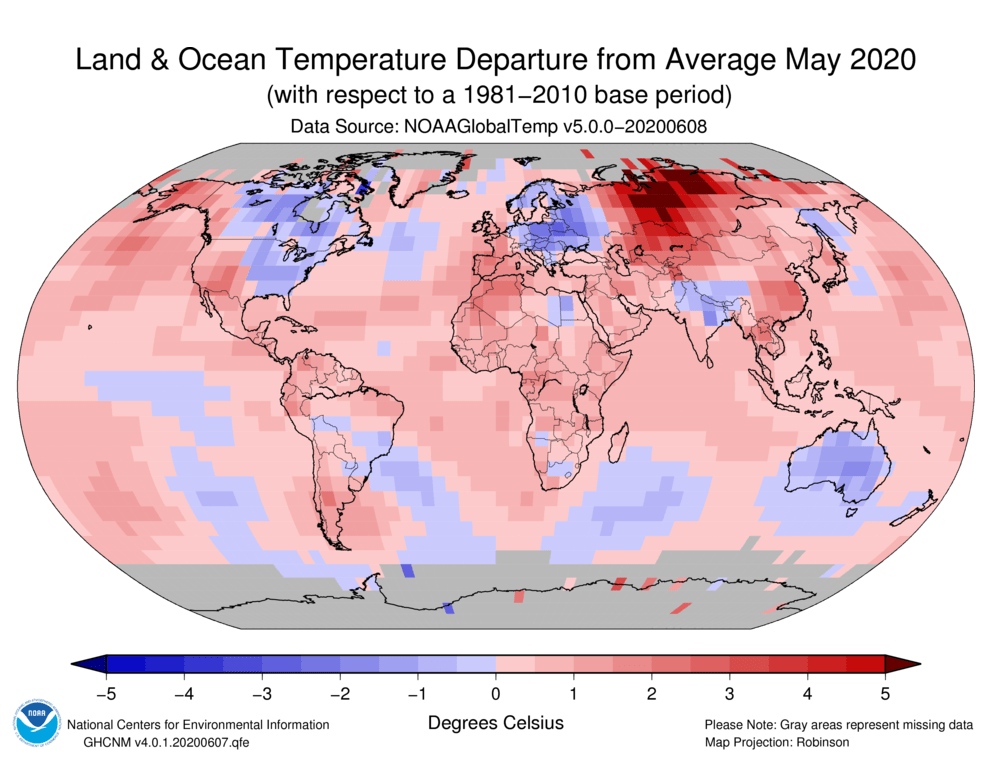
Sea Ice and Snow Cover
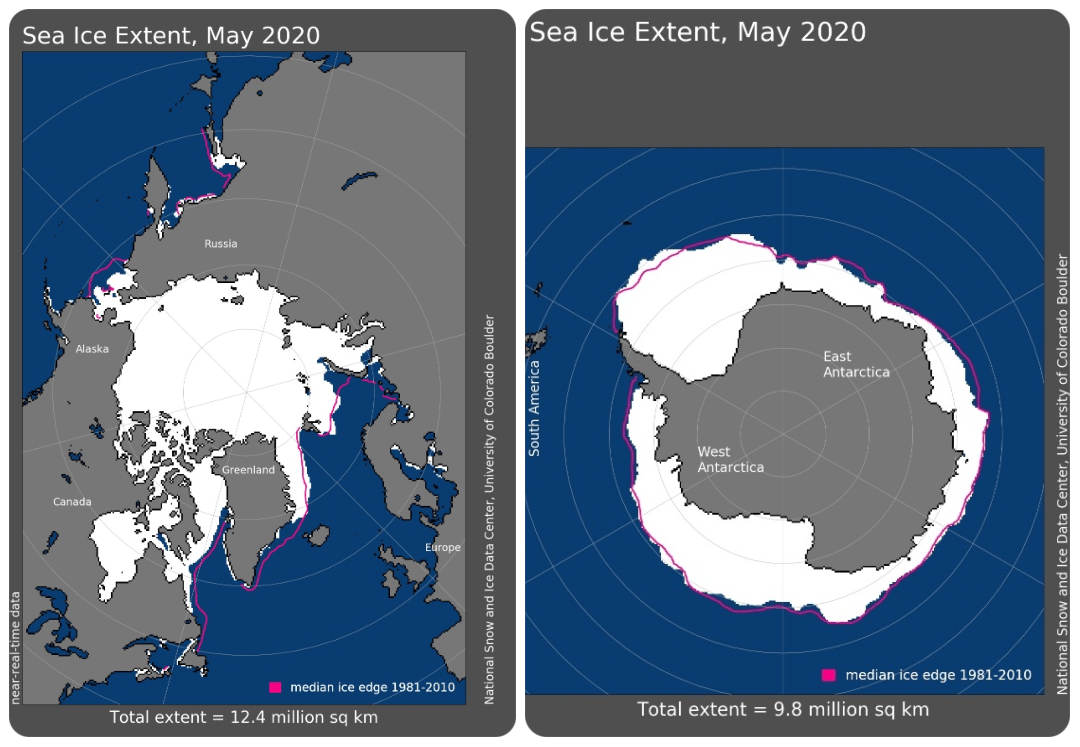
The May average Arctic sea ice extent was the fourth-smallest in the 42-year record at 359,000 square miles (7.0 percent) below the 1981–2010 average, according to analysis by the National Snow and Ice Data Center (NSIDC) using data from NOAA and NASA. Below-average May sea ice extent was present across parts of the Barents and Chukchi Seas.
The Antarctic sea ice extent during May 2020 was 130,000 square miles (3.3 percent) below the 1981–2010 average and the 15th smallest May sea ice extent on record. May 2020 marked the fifth consecutive May with sea ice extent below average.
The Northern Hemisphere snow cover extent during May was 910,000 square miles below the 1981–2010 average and sixth-smallest May snow cover extent in the 54-year period of record. The North American snow cover extent was near average, while Eurasia had its third-smallest May snow cover extent on record.
March-May 2020
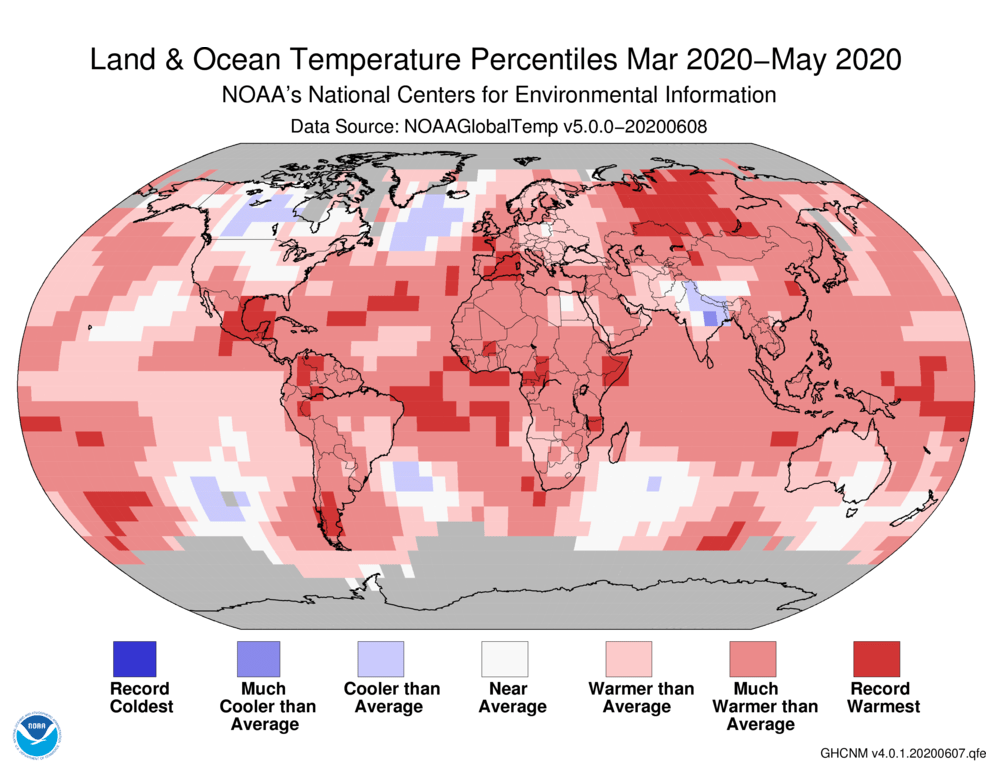
March-May 2020 was the second-highest such period in the 141-year record, with a temperature 1.91°F (1.06°C) above the 20th-century average of 56.7°F (13.7°C). The three-month period of March-May 2016 had a higher temperature departure at 2.03°F (1.13°C).
- The Northern Hemisphere and Southern Hemisphere had their second- and third-warmest March-May period on record, respectively.
- The three-month period was record warm for South America, Asia, and the Gulf of Mexico region. Meanwhile, the Caribbean region and Africa had their second- and third-warmest such periods, respectively, since regional records began in 1910.
- During March-May 2020, much of northern Asia had temperatures that were 5.4°F (3.0°C) above average or higher. The most notable cooler-than-average temperatures of 3.6°F (2.0°C) below average or cooler were present across much of Canada.
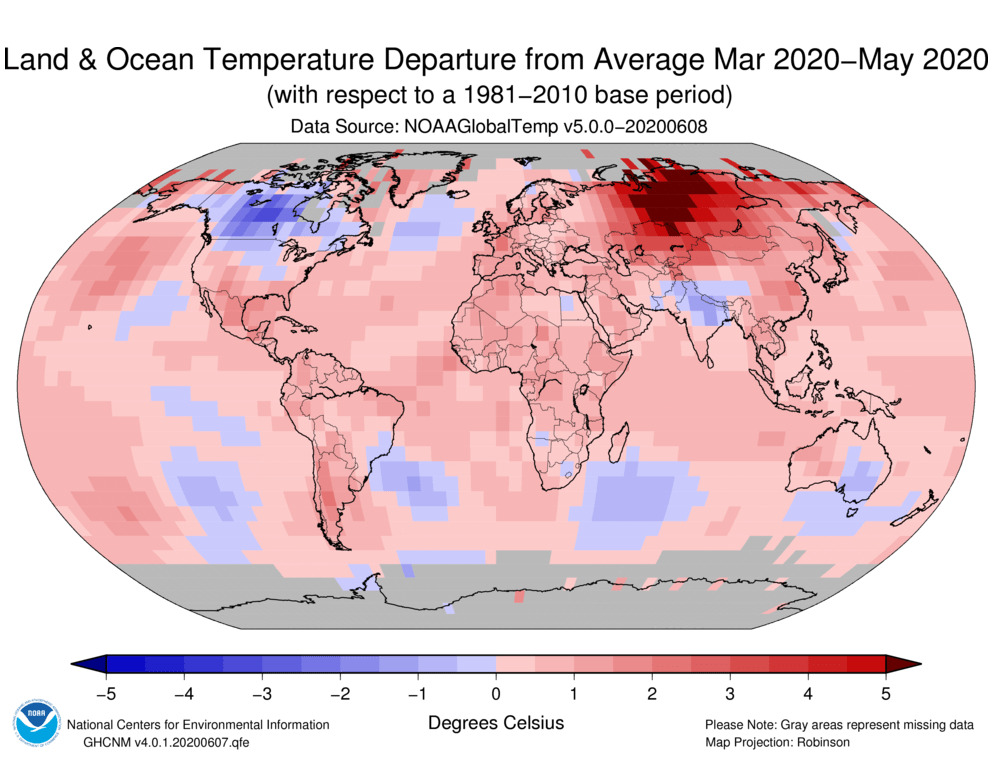
January-May 2020
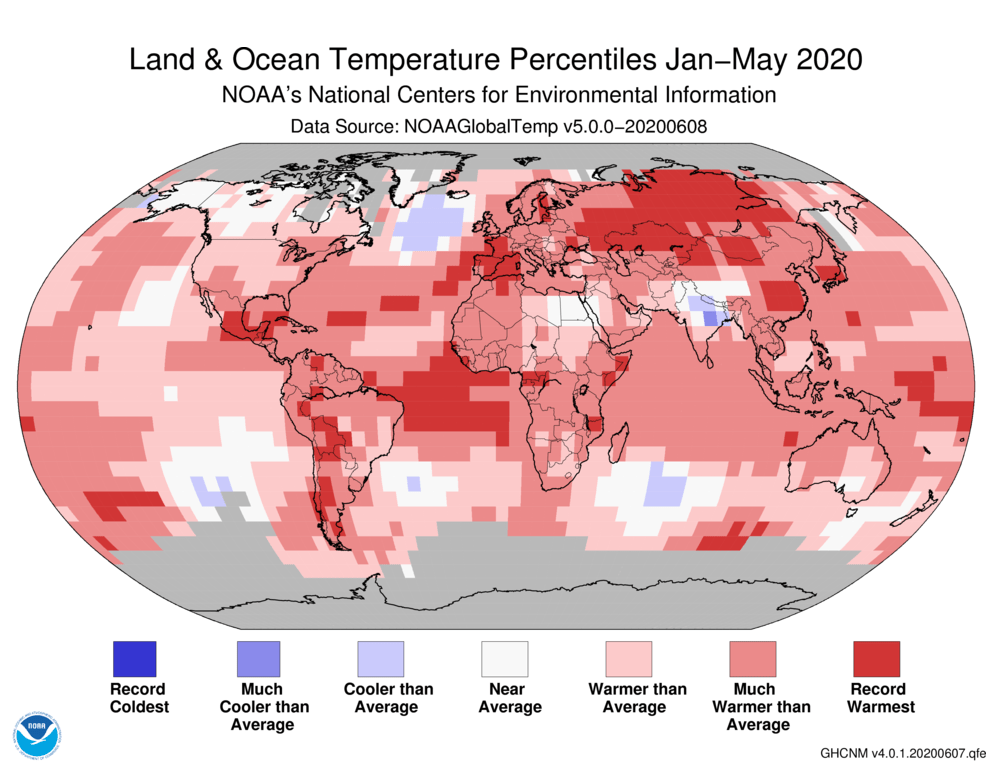
The year-to-date global surface temperature was also the second-highest in the 141-year record at 1.98°F (1.10°C) above the 20th-century average of 55.5°F (13.1°C). This value is only 0.11°F (0.06°C) less than the record set in 2016.
- South America, Europe, Asia, and the Gulf of Mexico region had their warmest January-May period on record. The Caribbean region and Africa had a January-May temperature that ranked among the three highest on record.
- The period was characterized by warmer-than-average temperatures across much of the global land and ocean surfaces. The most notable warm temperature departures were present across much of the northern half of Asia, where temperatures were at least 6.3°F (3.5°C) above average. Meanwhile, the most notable cool temperature departures of −2.7°F (−1.5°C) or cooler were present across much of Alaska.
- Record warm January-May temperatures were present across parts of the Atlantic, southern Pacific, and southern Indian oceans, as well as Europe, southern North America, South America, Africa, and across a large portion of northern Asia. Unusually warm conditions have been present across northern Asia since the start of the year.
- According to a statistical analysis done by NCEI scientists, the year 2020 is very likely (>99.9%) to rank among the five warmest years on record.
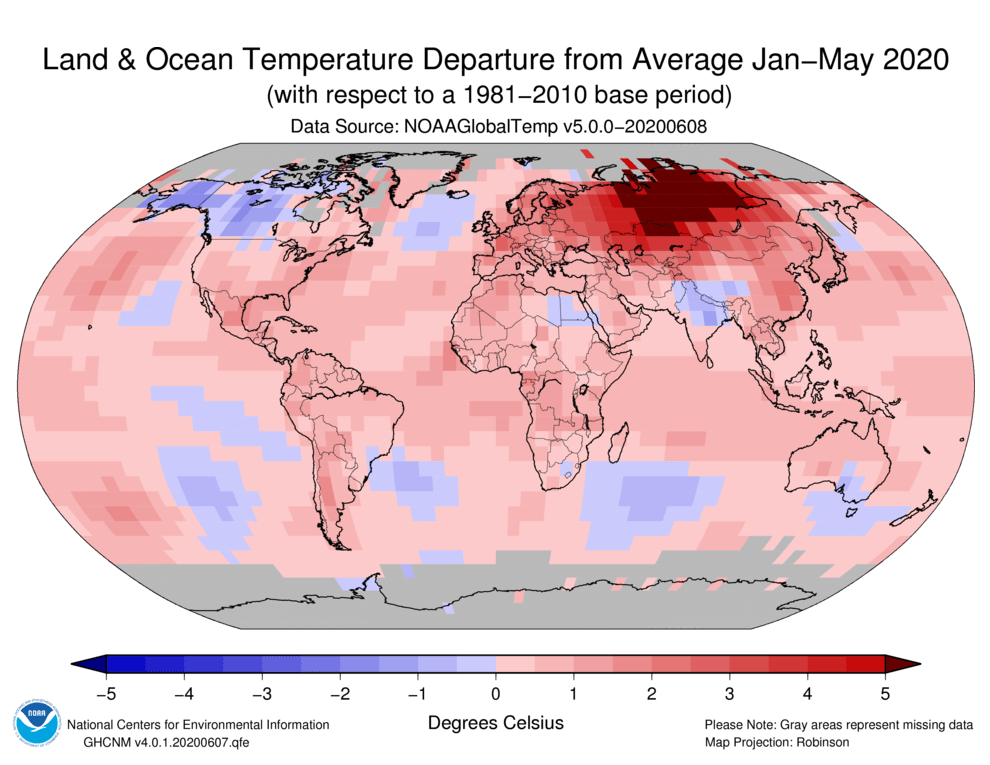
For a more complete summary of climate conditions and events, see the May 2020 Global Climate Report.

